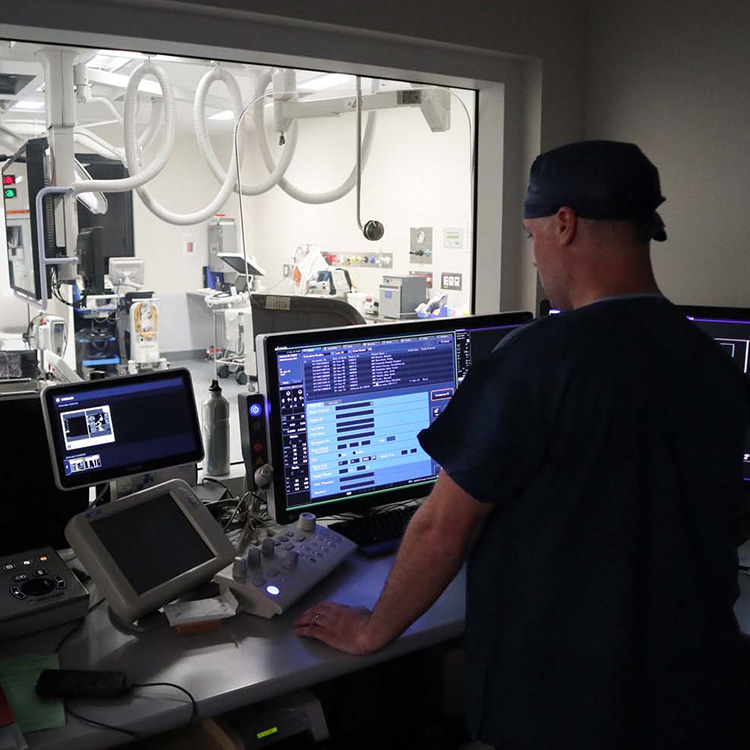A DAVF is a vascular malformation. It occurs when abnormal arteries which supply the dura (the outer lining of the brain) form abnormal connections directly onto cerebral veins or dural sinuses (large vein like structures which drain blood from the brain back to the heart). Arteries in the brain carry blood at high pressure, veins carry blood at very low pressures. When an abnormal artery connects directly onto a vein, high pressure blood is pumped directly in to the vein resulting in venous hypertension, fragility of that vessel and rerouting of the venous drainage of the brain. Over time this can result in bleeding in the brain.
What does the procedure involve?
Some types of DAVF are not dangerous and do not require treatment. However if a DAVF is classified as high risk one of the most successful methods to treat DAVF is via endovascular techniques (meaning via the arteries and veins). The procedure is performed under a general anaesthesia so you will need to fast prior to the operation (fasting information will be provided prior to the procedure.) A small incision is made over the femoral artery and a number of small plastic tubes (catheters) are inserted into the femoral artery over the hip joint and guided to the desired location in the brain. Very small catheters are then positioned in the abnormal feeding arteries or draining veins and a glue-like material is injected to block off the abnormal connection between the artery and vein, we call this embolisation. The length of the operation depends on the complexity of the DAVF.
In some circumstances embolisation of a DAVF may require multiple staged procedures, usually separated by a few weeks.
What are the risks or possible complications?
Specific risks from this type of procedure include:
- Small risk of stroke
- Non-target embolisation (embolic material may end up in unexpected/undesired locations)
- Damage to the arteries in the leg or neck
- Infection
- Damage to cranial nerves which can result in problems with swallowing, hearing loss, movement of facial muscles etc
What happens following the procedure?
Following completion of the procedure you will spend the night in ICU after which you will be transferred to the surgical ward. If there are no complications from the surgery, you would normally expect to spend two nights in hospital.
What follow up is required?
A review appointment will be made for 1 week following discharge from hospital. At this appointment the follow up plan will be discussed which usually involves a repeat cerebral DSA at 6-12 months following the procedure and MRI scans at various intervals.
Do I need to fast?
Yes you will be required to fast. Specific instructions regarding fasting will be provided when booking the procedure.

